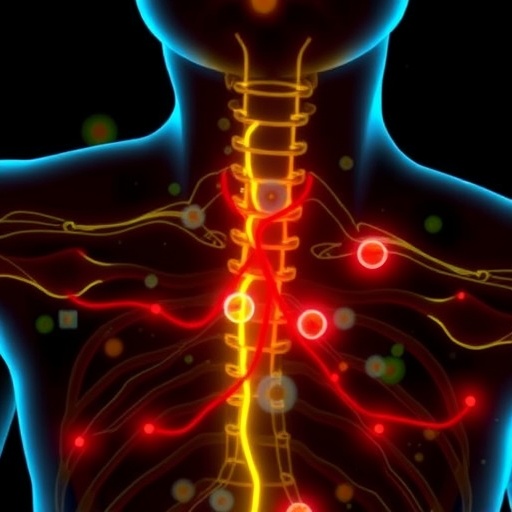Research on pain in sickle cell disease has traditionally relied on subjective questionnaires, which often fail to capture the complex nature of the pain experienced by patients. However, a groundbreaking study led by Carnegie Mellon University’s Wood Neuro Research Group is changing the narrative. Their innovative approach employs advanced neuroimaging techniques and interactive digital tools to gain insights into the pain mechanisms affecting individuals with this condition.
Pain is a challenging phenomenon to quantify, especially in the context of sickle cell disease, where episodes of severe pain can occur without warning and are experienced differently by each patient. Traditional pain scales that convert subjective experiences into a single numerical value do not adequately reflect the nuances of this type of pain. Joel Disu, a leading researcher in the study, emphasizes that understanding the intricacies of how sickle cell pain is experienced at the neurological level can enhance both treatment and patient care.
One of the key breakthroughs of this study is the use of the Painimation app, developed by Dr. Charles Jonassaint at Emory University. This app allows patients to express their pain in real-time using animated visuals instead of numeric ratings. By doing so, the app captures the emotional and sensory aspects of pain more effectively, enabling a more comprehensive understanding of the patients’ experiences. This development marks a significant shift towards a more human-centered approach in pain research.
Utilizing ultra-high-resolution MRI data, the researchers distinguished the brain connectivity patterns of 27 patients with sickle cell disease from those of 30 healthy individuals. They specifically looked at three major brain networks known for their roles in pain perception: the default mode network, the salience network, and the somatosensory network. The findings revealed that patients with sickle cell disease exhibited significantly lower connectivity in all three networks, underscoring the neurologically rooted challenges they face with pain management.
When examining the relationships between the patients’ responses in the Painimation app and their MRI results, the researchers identified a strong correlation between specific pain descriptors, such as cramping or stabbing, and disrupted brain activity within the somatosensory network. This represents a promising advance toward developing objective pain biomarkers that could transform the way pain is perceived and measured in clinical settings.
Furthermore, researchers recognize that effective communication between patients and healthcare providers has historically been fraught with misunderstandings. The inability to effectively articulate pain often leads to mistrust and inadequate treatment strategies. By visualizing the brain’s response to pain and correlating it with patient-reported experiences, this study validates the true nature of the pain felt by individuals with sickle cell disease.
Sossena Wood, an assistant professor at Carnegie Mellon and a co-author of the study, highlights the significance of their findings in providing scientific evidence to support patients’ experiences. The study not only reinforces the reality of sickle cell pain but also opens the doors for more empathetic and informed patient care. Wood’s team envisions building on this research to integrate emerging technologies, such as virtual reality and wearable sensors, to further refine pain management strategies in real-world settings.
Carnegie Mellon’s commitment to advancing biomedical engineering is evident in the investment into such transformative research. The multidisciplinary collaboration among experts from various fields underscores the importance of innovative solutions in addressing complex health issues like sickle cell disease. The team aims to bridge the gap between empirical research and compassionate care, thereby setting a new standard for patient-clinician interactions.
The implications of this research extend beyond the laboratory and into clinical practice. The adoption of tools like Painimation in various sickle cell communities nationwide is a testament to their potential in reshaping how pain is managed. As clinicians become more attuned to the neurological underpinnings of pain, they can tailor interventions that resonate more closely with patients’ lived experiences.
In recognition of his contributions to this field, Disu has been awarded the prestigious 2025 Hematology Inclusion Pathway Graduate Student Award from the American Society of Hematology. This accolade not only provides him with financial support for his research but also highlights the significance of his work in transforming perceptions of pain in sickle cell disease. The positive trajectory of this research suggests a more hopeful future for those affected by chronic pain.
Ultimately, the study illuminates a critical path forward in medicine—one that emphasizes understanding and empathy in equal measure. As researchers continue to explore the intersection of neuroscience and pain management, there lies an opportunity to redefine the therapeutic landscape for individuals living with sickle cell disease, ensuring they receive the compassionate and informed care they deserve.
This innovative research aligns well with the ongoing quest for a deeper understanding of pain pathophysiology and the need for improved clinical outcomes for patients suffering from complex conditions. The study serves as a powerful reminder of the importance of addressing not just the physical aspects of pain, but also the emotional and psychological dimensions that accompany chronic illness.
In conclusion, the work done by Carnegie Mellon’s Wood Neuro Research Group is a pioneering venture that will undoubtedly pave the way for more effective treatments and greater empathy in the management of sickle cell pain. By merging cutting-edge science with human-centered care, researchers are poised to make significant strides in the realm of pain management for this vulnerable patient population. The future of sickle cell disease treatment may well rest on the foundation laid by this transformative research.
Subject of Research: Pain in Sickle Cell Disease
Article Title: Nociceptive and neuropathic pain descriptors in adults with sickle cell disease are associated with overlap activity in the default, salience and somatosensory networks
News Publication Date: N/A
Web References: N/A
References: N/A
Image Credits: Credit: Please provide credit when sharing and do not profit off this image.




